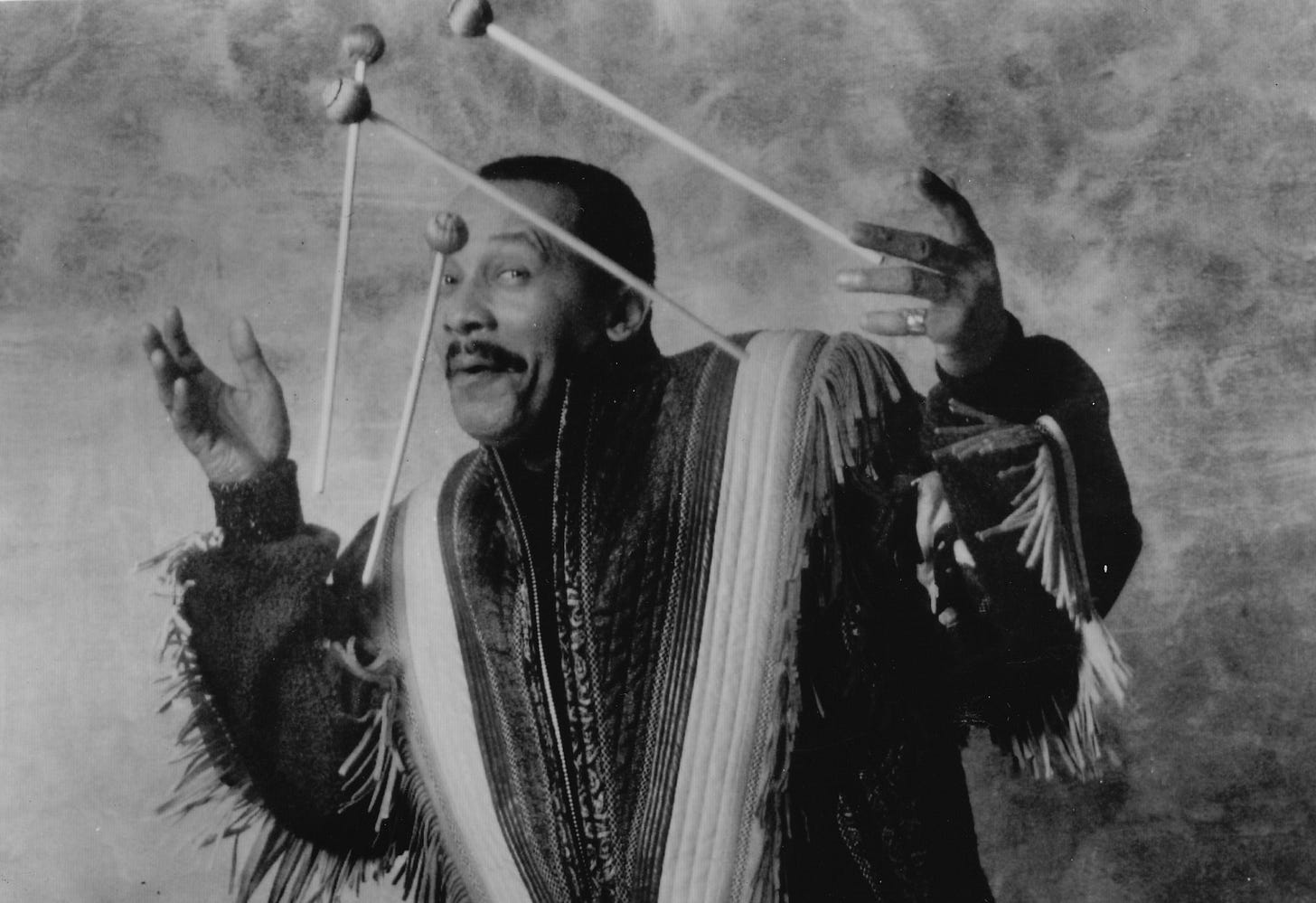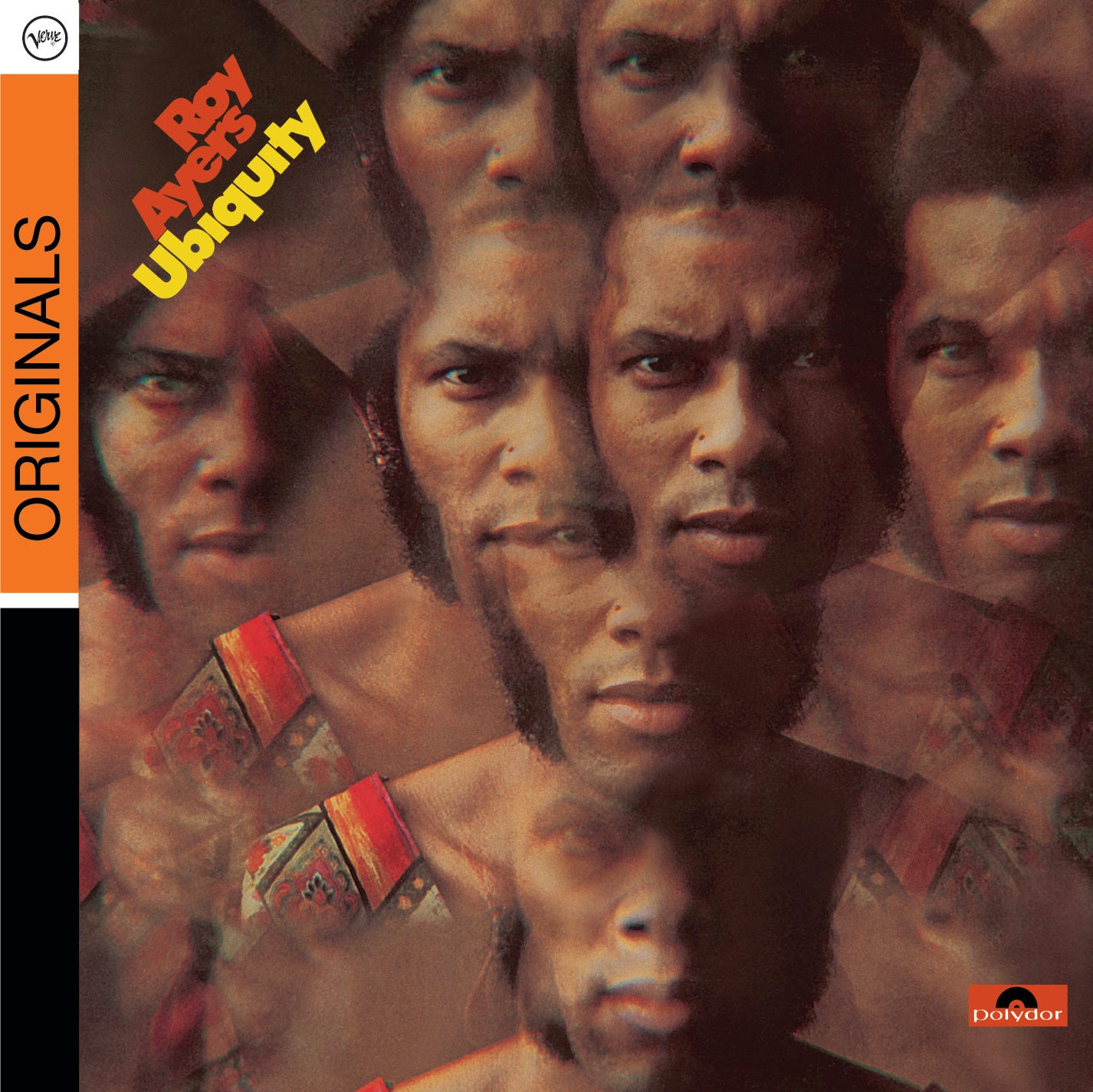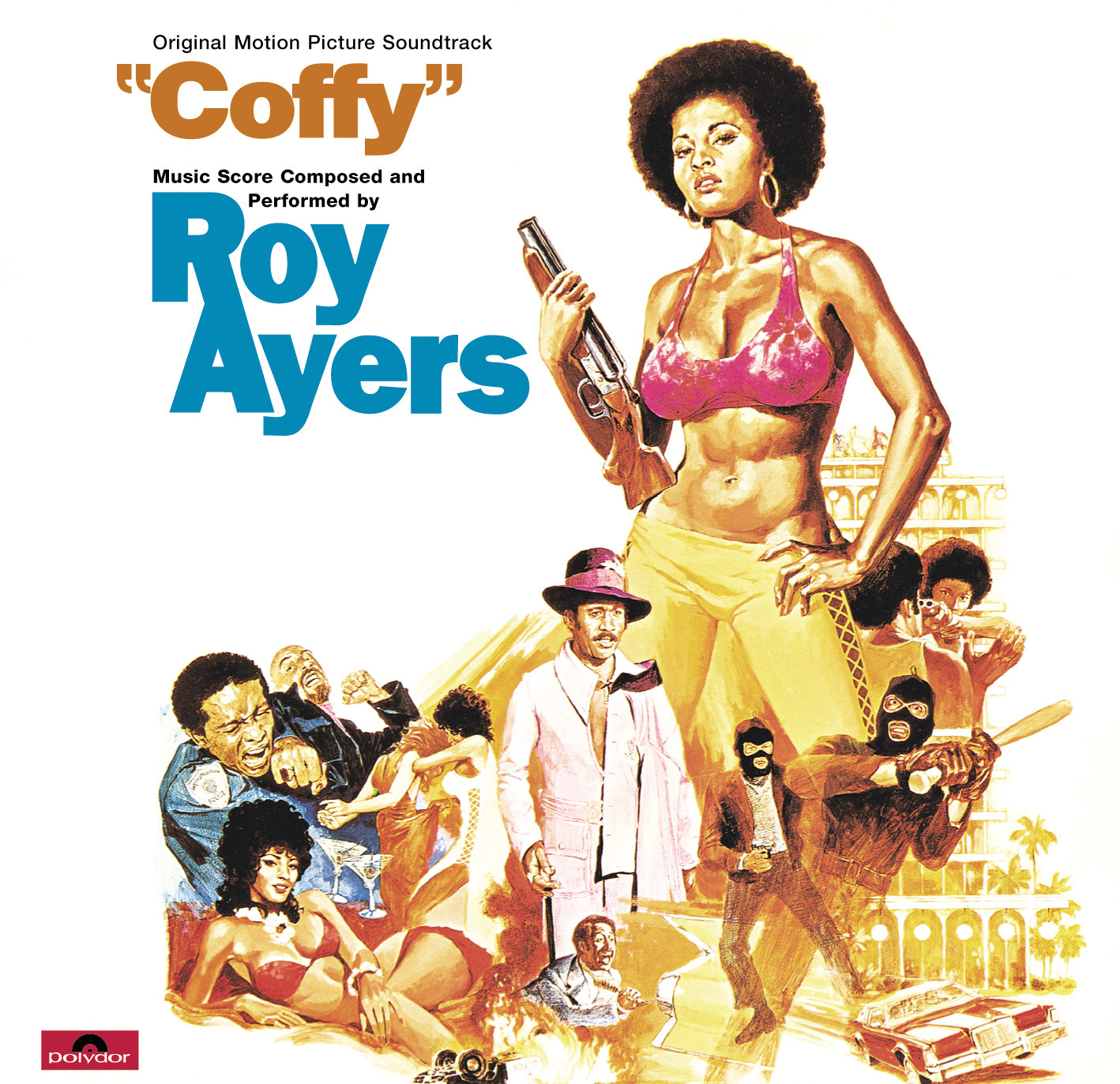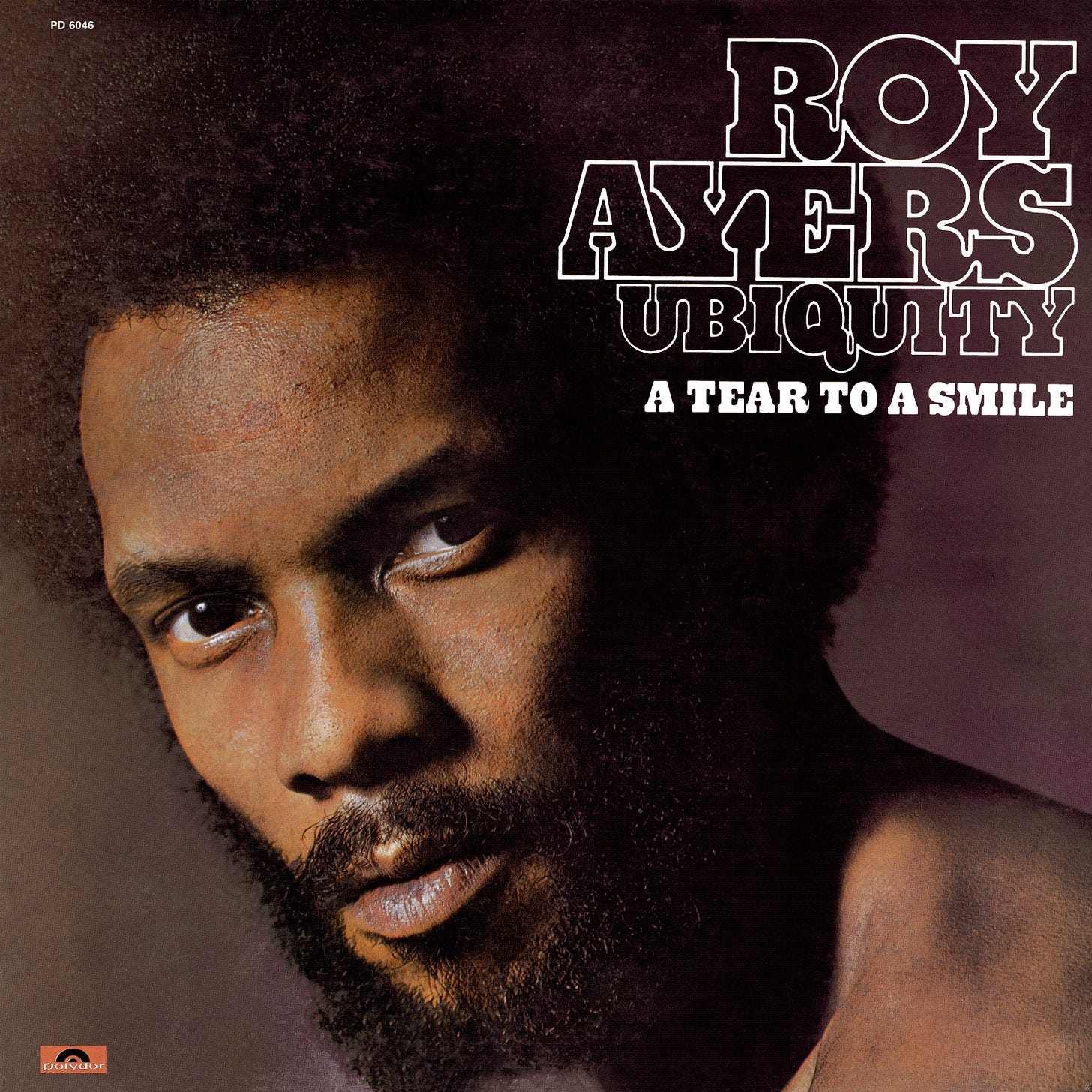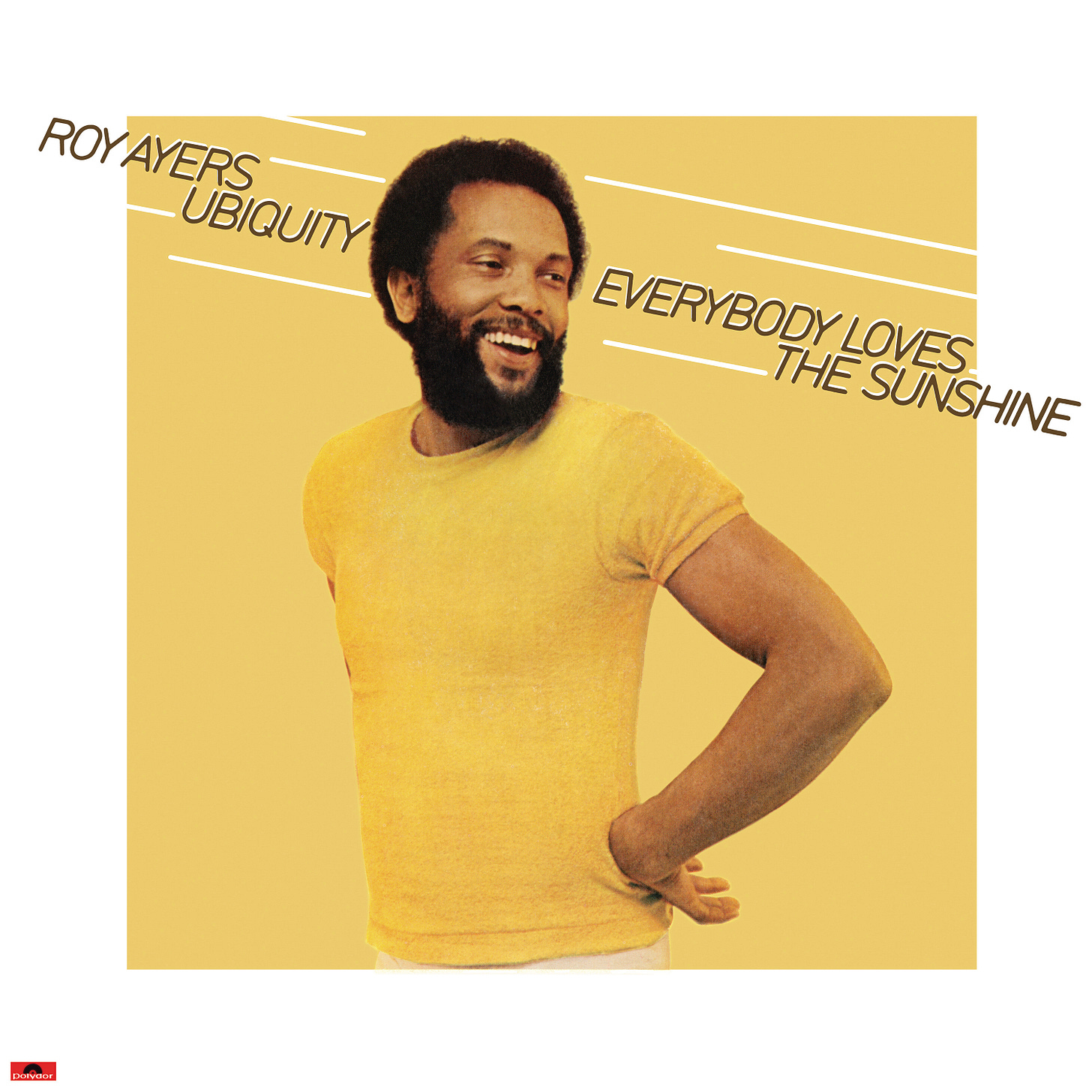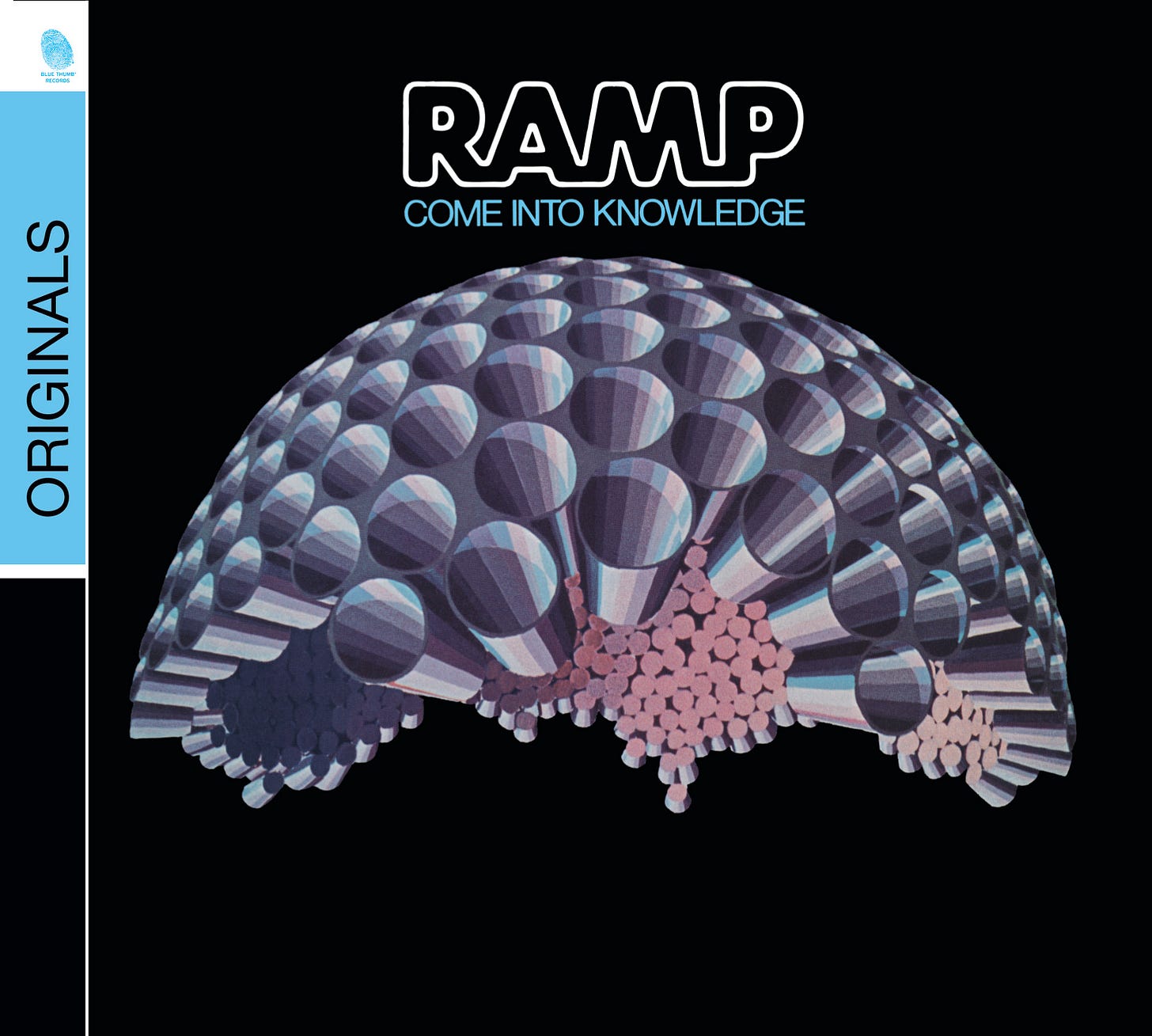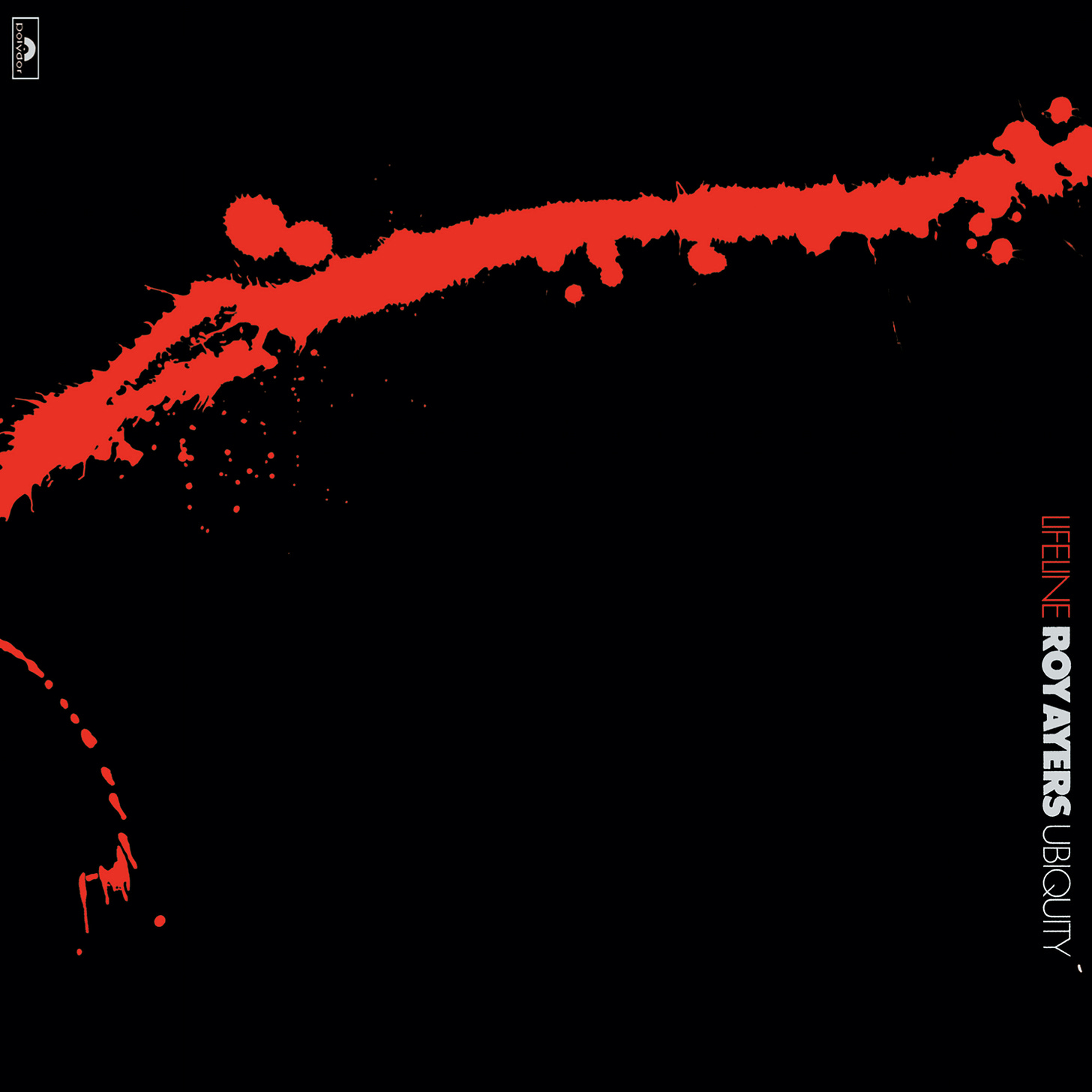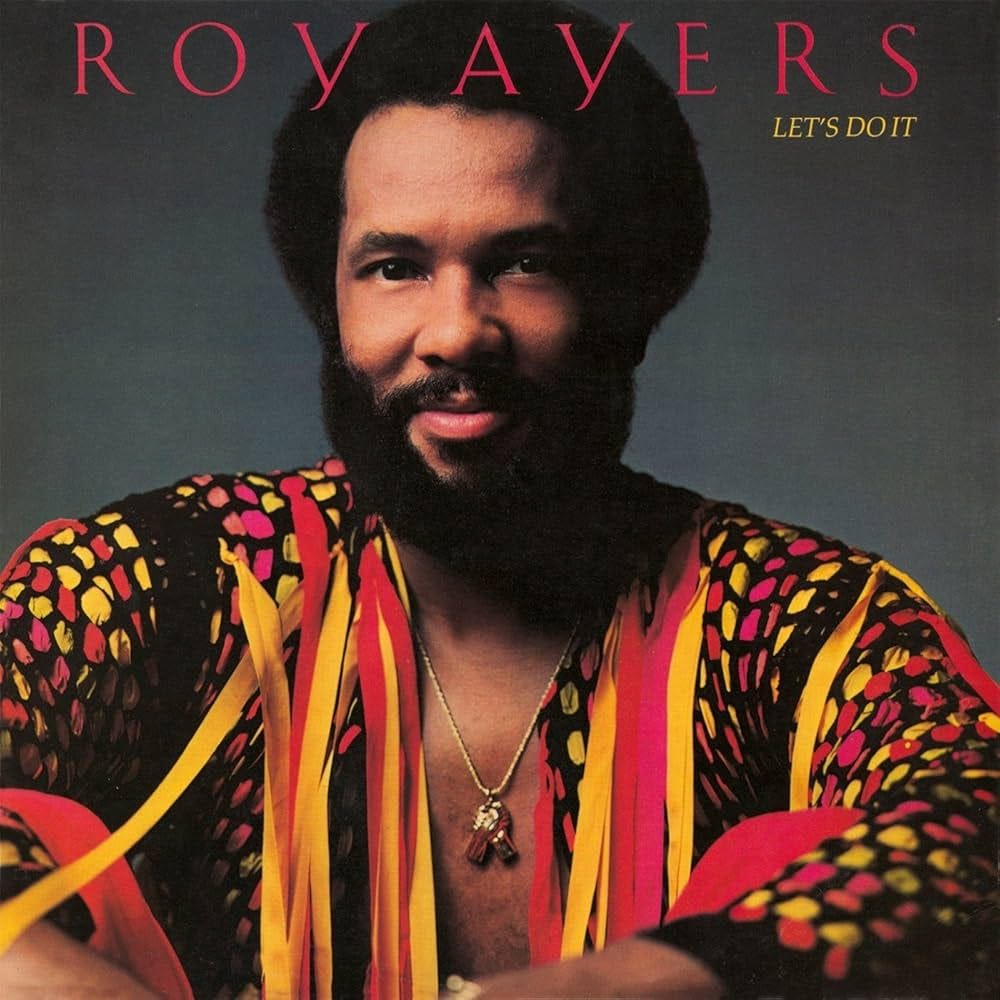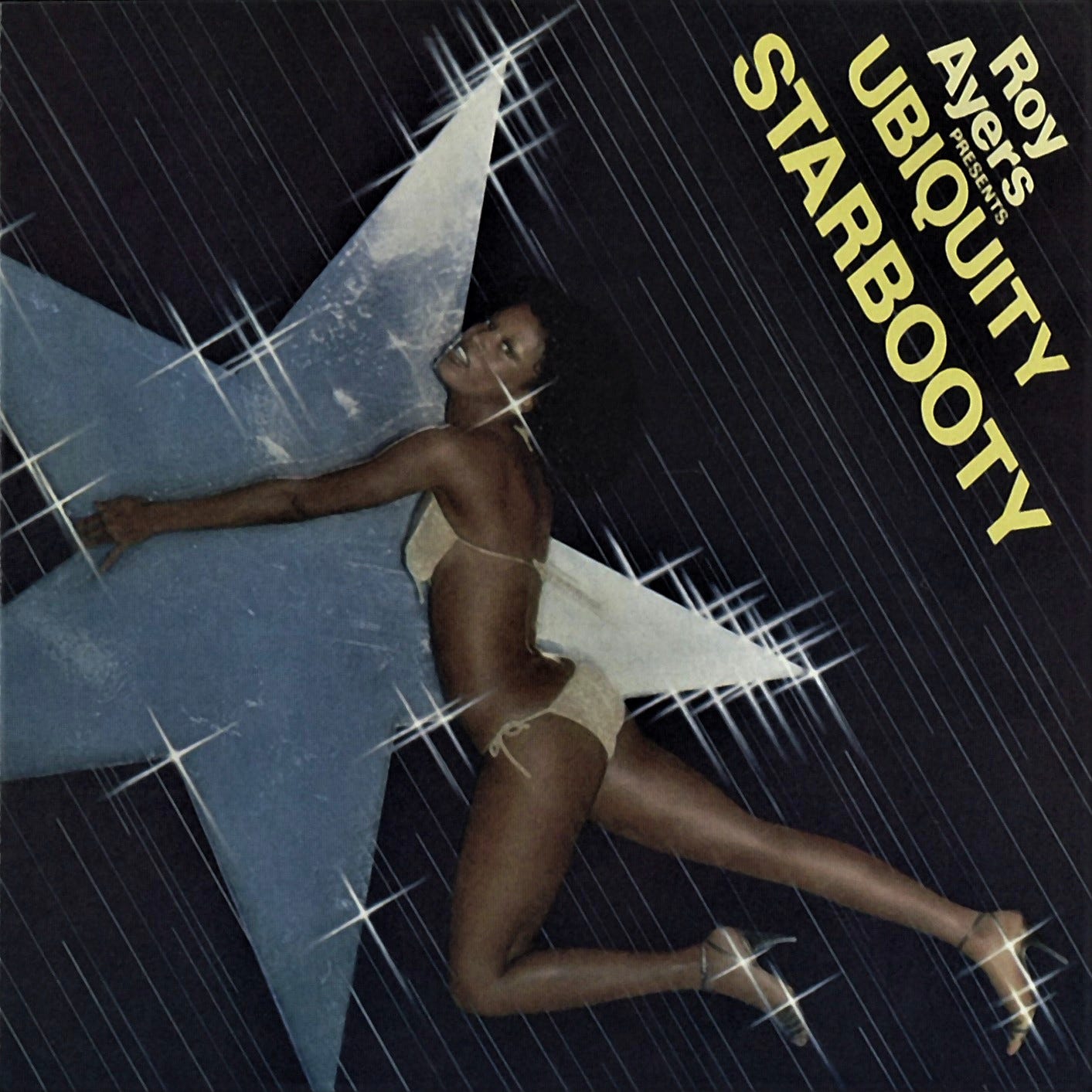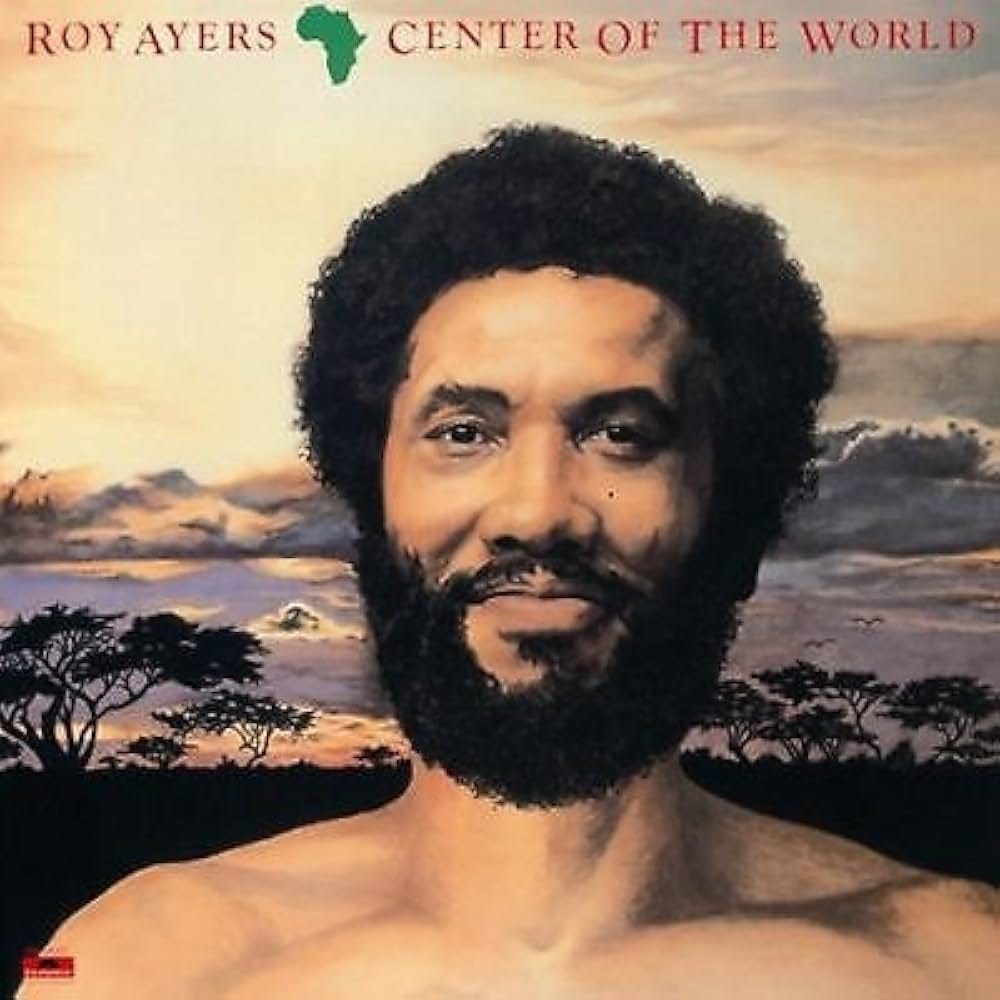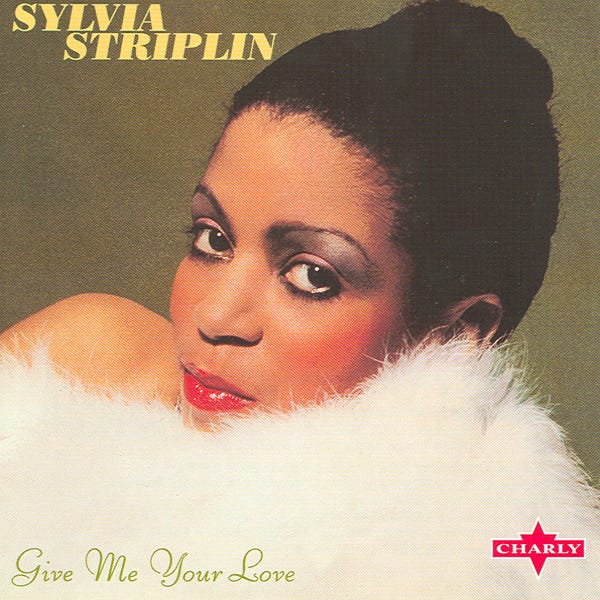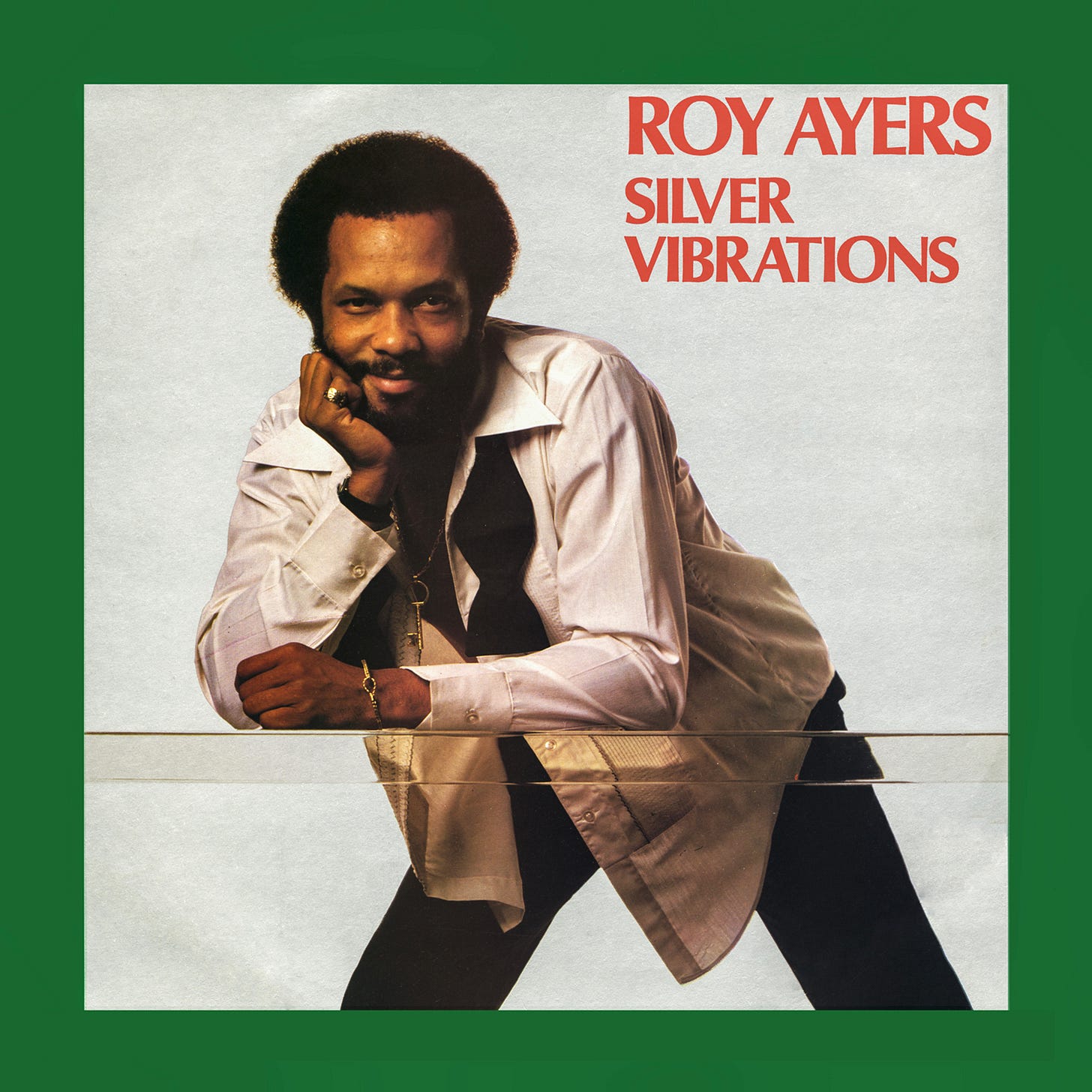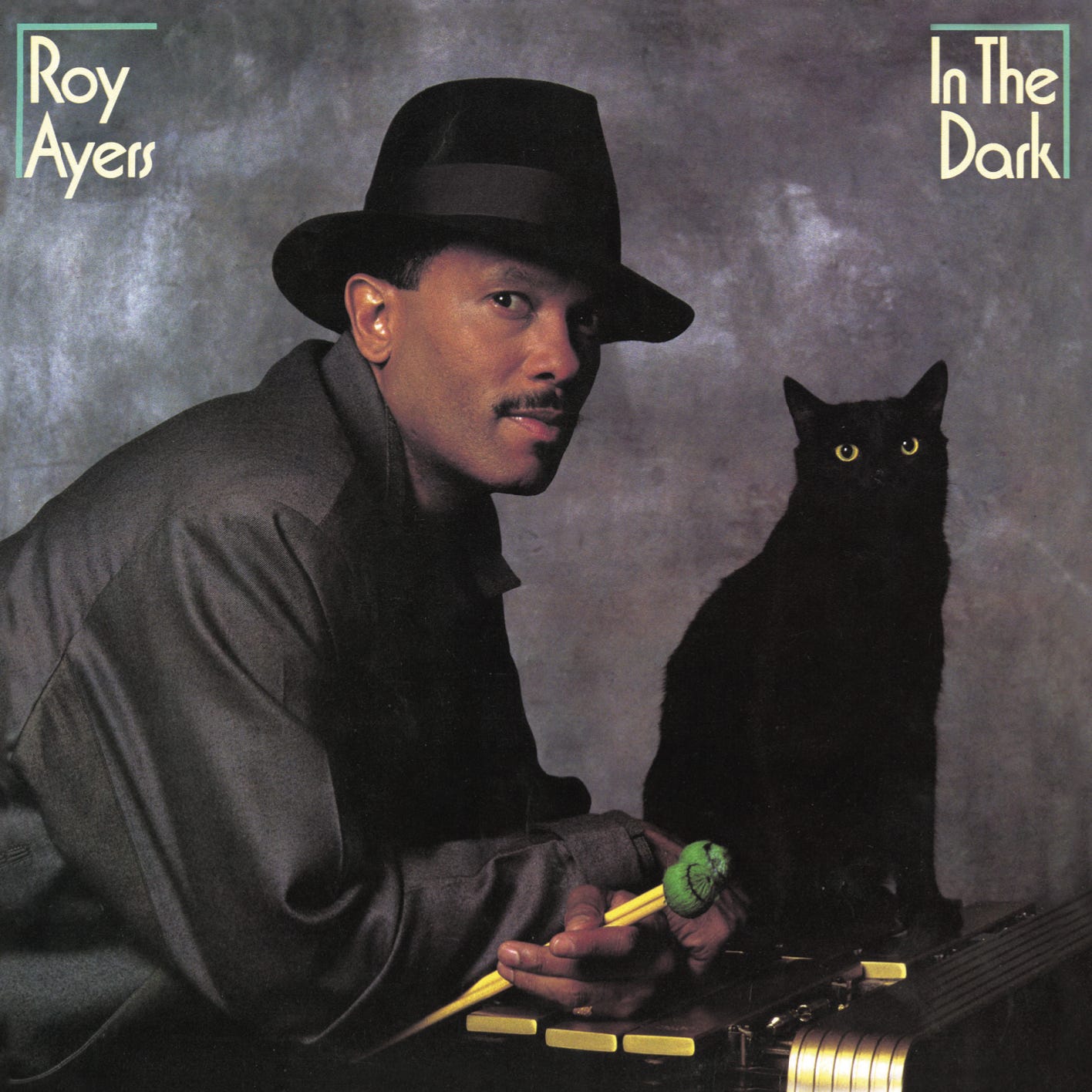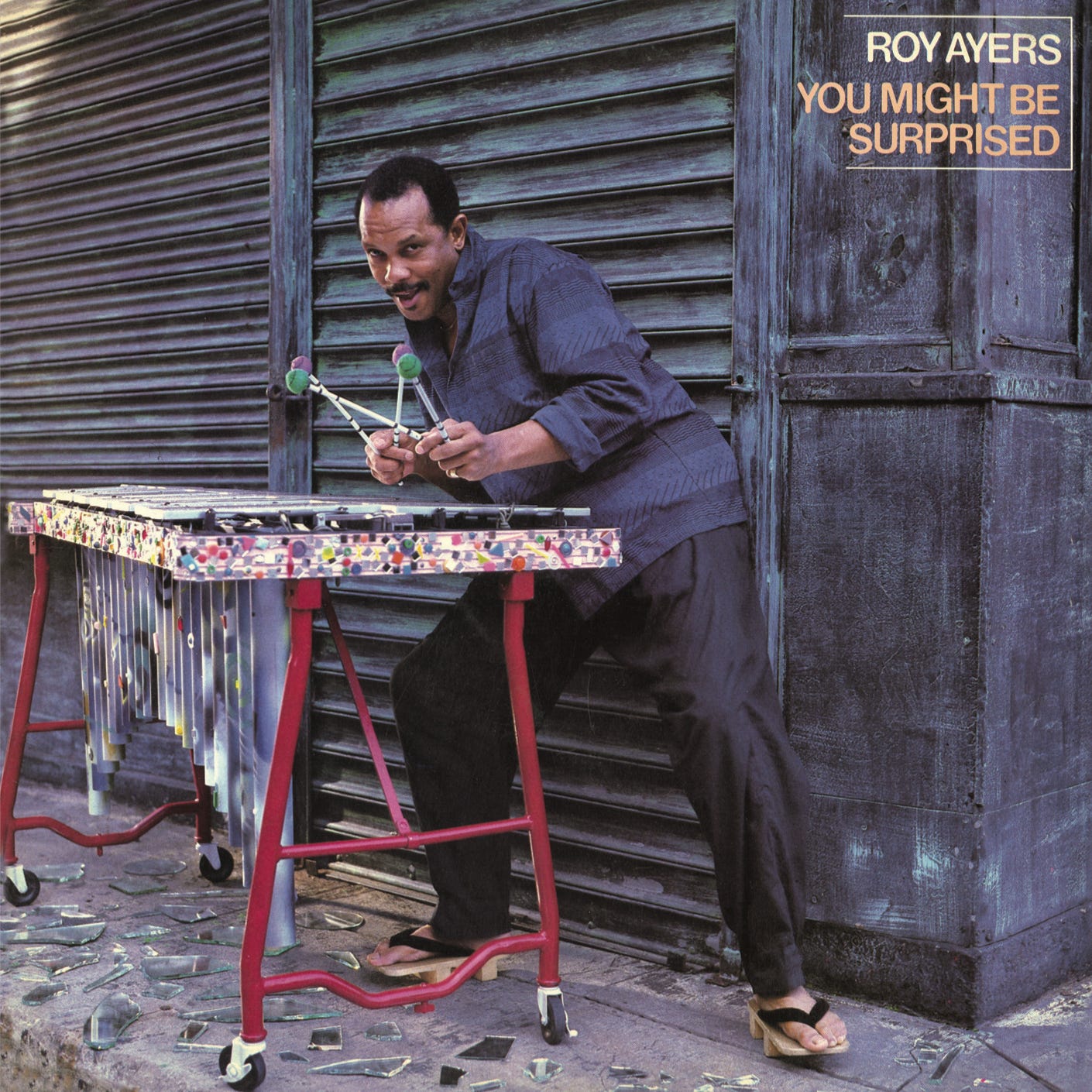The Eternal Roy Ayers
Everyone falls in love with the dazzling sunlight during this season—the maestro who manipulated cool vibraphone and mellow vibrations, greatly influencing soul music.
At the beginning of the film Straight Outta Compton (2015), Roy Ayers’ “Everybody Loves the Sunshine” plays as a song that Andre Young is supposedly listening to through headphones. As symbolized by this scene, Roy is a boss-like figure revered by hip-hop and R&B artists, and his music has been sampled numerous times, sometimes with him being invited to collaborate. His sampling frequency and godfather status rival that of James Brown, and he has been deified in movements like Rare Groove and Acid Jazz, with his works from the 1970s continuously being reevaluated with new perspectives.
Declaring himself the “King of the Vibes” in his 2011 album title, he has expressed a hard-boiled world racing through urban darkness and a sexy mood that brings men and women closer together through the cool sound of vibes and his nasty vocals. Jazz funk with a back-alley sensibility represented by “We Live In Brooklyn, Baby.” Mellow soul that also connects to smooth jazz, like “Vibration.” The coexistence of funkiness and mellowness is easy to understand when listening to the soundtrack of the film Coffy (1973).
Roy, who was given mallets by Lionel Hampton in his childhood and also performed with Bobby Hutcherson, released his first leader album from United Artists as an up-and-coming jazz performer from LA in 1963. However, what we’re highlighting here is his shift towards soul/funk after he formed his own group, Roy Ayers Ubiquity, derived from his first album with Polydor, Ubiquity (1970), following a three-part soul-jazz series produced by Herbie Mann for Atlantic.
Like the relationship between Herbie Hancock and The Headhunters, or Donald Byrd and The Blackbyrds, Roy built a similar dynamic with Ubiquity. Experiencing the tight atmosphere of New York, he expanded his musicality in sync with psychedelic soul and new soul movements, increasingly using electric piano and percussion while adding more vocal parts. Keyboard players like Edwin Birdsong and Harry Whitaker, who were also involved in songwriting, particularly influenced the sound and musical direction as Roy’s right-hand men. Roy’s music became more sophisticated and innovative by incorporating their rich melodies and cross-boundary sensibilities.
From the mid-1970s, Philip Woo, who later joined Maze, became part of Ubiquity, and his synthesizer expanded the mellow and spacey sound world. Classics like “Everybody Loves the Sunshine” and “Searching” were born during this era. According to Woo, while Maze’s leader Frankie Beverly valued unity as a family, Roy was always looking for new talent, even allowing musicians to participate in recordings without hearing them play first—a kind of craziness that probably made his music free and wide-ranging. The boogie disco tunes from the late 1970s, co-written with Edwin Birdsong, represented by “Running Away” (which reached his highest R&B chart position at #19), likely emerged from Roy’s free-spiritedness and positive energy.
Roy’s Nigerian tour in late 1979, during which he spent time with Afro-funk genius Fela Kuti, further refined his sensibilities. He released a collaboration album with Fela, Music of Many Colours, in 1980, and followed it with Africa, Center of the World in 1981, based on his experiences there. Roy’s music, which had already embraced Afro-Cuban elements, continued to evolve. Meanwhile, he also released a collaborative album with jazz trombonist Wayne Henderson, which became a precursor to the fusion/black contemporary direction he would pursue after leaving Polydor, through labels like Columbia, Ichiban, and RCA.
As Roy Ayers Productions, he produced solo works by Ubiquity and Ramp in the late 1970s, and around 1980, he began focusing more on production work. While still with Polydor, he established his own label, Uno Melodic (and its subsidiary, Gold Mink). Utilizing the soul/funk sensibilities cultivated through collaborations with Ubiquity members, he produced works by Eighties Ladies, Sylvia Striplin, Bobby Humphrey, Justo Almario, and others. The label also signed Terry Wells, a diva from Dexter Wansel’s group who, like Roy, performed spacey jazz-funk. Though her songs went unreleased, they were later made public in BBE’s unreleased collection Virgin Ubiquity II (2005).
Putting too much energy into Uno Melodic led to the termination of his contract with Polydor, which was a setback, but around the time he participated in fellow street funker Rick James’s 1982 album Throwin’ Down, offers for guest appearances as a vibraphonist increased. From then on, he added his cool sound to songs by Whitney Houston, Mary J. Blige, Lord Finesse, Eric Benét, Gerald Levert, and in recent years, has been invited to work on projects by Tyler, The Creator and Alicia Keys. During this period, he also participated in projects like Guru’s Jazzmatazz and Masters At Work’s Nuyorican Soul. He had a particularly special relationship with Erykah Badu, appearing on each other’s works, including his 2003 album Mahogany Vibe. Being called the “Godfather of Neo Soul” by Erykah encouraged Roy to create a song titled “Neo Soul Groove.” His jazz-funk recordings at Electric Lady Studios in the 1970s influenced left-field musicians like the Soulquarians crew (which included Erykah), who revered him as a legend, while Roy himself was inspired to venture into new territories—creating a positive cycle of mutual influence.
It makes perfect sense that Roy was chosen as the first artist for Adrian Younge and Ali Shaheed Muhammad’s new project Jazz Is Dead, especially considering that Ramp’s “Daylight” was sampled by A Tribe Called Quest. Their collaborative album, aptly-titled Roy Ayers, extracts the essence of Roy with a sound that is even more Roy-like than the current Roy, as exemplified by “Synchronize Vibration,” which evokes “Everybody Loves the Sunshine” with its female vocals. The bossa-influenced tracks also showcase his affinity with Latin music.
Ubiquity (1970)
Due to space limitations, we’re only featuring works from the 1970s onward, but this is clearly the album that marks his turning point. Opening the door to the 1970s with his move to Polydor, it pleasantly resonates with a mixture of funkiness influenced by Sly and others. It’s also important that his arrangement and songwriting brains, including Edwin Birdsong and Harry Whitaker, were assembled here, and the title later developed into the band name.
Coffy (1973)
The soundtrack for the Pam Grier film that Roy scored. The driving jazz-funk co-written with Carl Clay, like “Coffy Is the Color” which plays during the opening and the ending theme “Shining Symbol,” showcases Roy’s true talent with vibrant vibraphone tones. The mellow tunes are also excellent performances, with Dee Dee Bridgewater passionately and nobly singing “Coffy Baby” just before her solo debut.
A Tear to a Smile (1975)
Beginning with the spiritual track “2000 Black,” which was later covered by 4hero and became Talkin’ Loud’s label name, this album features sophisticated and mellow jazz-funk that would lead to its reevaluation in the rare groove era, unfolding with a groovy flow. It also includes the cool Earth, Wind & Fire cover “The Way of the World” and “Time and Space,” featuring Dee Dee Bridgewater’s wonderful singing.
Everybody Loves the Sunshine (1976)
The representative work known for the languidly mellow title track, which is now remembered alongside Mary J. Blige’s “My Life.” With Philip Woo joining Ubiquity on synthesizer, jazzy tracks like “The Third Eye” and percussive jazz-funk like “The Golden Rod” gained more sophistication. The sophisticated sensibility that makes Gino Vannelli’s “Keep On Walking” even more mellow than the original is captivating.
Come Into Knowledge (1977)
A five-person mixed group formerly known as Saturday Night Special recorded under the name RAMP (an acronym for Roy Ayers Music Production). Produced by Roy, Edwin Birdsong, and others, it includes the jazzy “Daylight” (sampled by ATCQ) and the funk piece “The American Promise” (remade by Erykah Badu), featuring enchanting vocals with tight, loop-like performances. “Everybody Loves The Sunshine” is even more mystical than the Ubiquity version.
Lifeline (1977)
The final album under the Roy Ayers Ubiquity name, which reached the Top 10 on the Soul chart. “Running Away,” which became a sampling standard later used in ATCQ’s “Bonita Applebum” and others, is included here. Co-produced by Edwin Birdsong and William Allen, it gives the impression of increased accessibility that could reach the disco audience. Worth comparing with Ramp’s release from the same year.
Let’s Do It (1978)
An album with strong vocal density, responding to the disco boom while focusing on his own singing. He sings freely and expressively with support from William Allen and beats from Bernard Purdie and others, backed by Philly soul-style strings. The house-style “Sweet Tears” (later revived in his collaboration with Nuyorican Soul) and the percussive disco-funk “Freaky Deaky” make a strong impact.
Starbooty (1978)
The only album released by Ubiquity as an independent band, featuring Philip Woo, Ricky Lawson, Justo Almario, and others. Produced by Roy, it maintains a funky & mellow aesthetic throughout, led by the disco-flavored title track, while clearly showcasing each performer’s individuality. The sole female member, Sylvia Cox, also shines, displaying mystical female vocals on “Love Is Love.” It’s like a blueprint for Uno Melodic.
Ladies of the Eighties (1980)
The first album released on Uno Melodic. This powerful female quintet of talented performers including Sylvia Striplin, Denny Corbett, and Marva Hicks, seductively and powerfully delivers urban disco dancers produced by Roy and Edwin Birdsong with lead vocals and unison choruses. The medium-slow “He Is Mine Forever” elevates Roy’s sensuality to a sophisticated mood, and it is also exquisite.
Africa, Center of the World (1981)
Following his 1980 collaboration with Fela Kuti, “Music of Many Colors,” this album features Roy’s own rendition of Fela’s composition of the same title. However, it’s not just about the atmosphere suggested by the album cover—it also includes urban disco gems like “Land of Fruit and Honey” and the stylish dancer “There’s a Master Plan.” Omar Hakim’s tight performance and the smooth singing of the Eighties Ladies members are also pleasing.
Give Me Your Love (1981)
This is a solo work by a diva who also sang with Norman Connors’ Aquarian Dream. It was released right after she joined Eighties Ladies. Produced by Roy and James Bedford, it showcases mellow disco dancers with a coquettish voice. The floating medium-tempo “You Can’t Turn Me Away,” a standard sampling source, and the title track, a dance classic reminiscent of Diana Ross, are the highlights.
Silver Vibrations (1983)
This UK-only release was issued after his contract with Polydor ended and was released on Uno Melodic. It partially modifies the content of “Lots of Love,” which was released in the US the same year. It features dance numbers evolved for the ‘80s that make your hips want to rise. The album offers a rich selection of songs, including Chicago and Washington DC, tribal disco with female lead vocals, and beautiful slow songs with Stevie Wonder-like chord progressions.
In the Dark (1984)
His first release after moving to Columbia. Mainly co-produced with Stanley Clarke, the album features dance beats created with drum machines typical of the era, highlighting Roy’s flowing vibraphone playing. The participation of Grover Washington Jr. and Tom Browne also enhances the fusion sensibility. “Poo Poo La La,” a Black Contemporary Radio-style track with spoken words, features Miki Howard soulfully joining in during the latter half.
You Might Be Surprised (1985)
For his second Columbia release, Roy entrusted about half of the production to James M’tume, who was in top form then. When M’tume’s signature synths and drum machines create a twilight feeling alongside vocals from Tawatha and others, it becomes completely Mtume-style boogie funk, but there’s no doubt it’s a collection of good songs with a coolness characteristic of the 1980s. On the Roy-led tracks, Don Blackman shows his talent, and the medium-tempo title track featuring Jean Carn is excellent.


